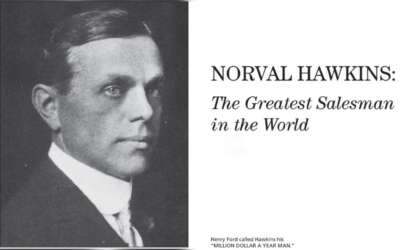Considering raising your prices? I recently had an interaction with someone who has their ear to the SaaS community, and the buzz on the street is that, “Price increases! I think we’re going to see a LOT of these next year.”
Before you pull the trigger, make sure you are fully calculating the subconscious unintended costs of a price increase.
Here’s what I mean:
Why are you raising prices?
If the answer is, “We’re losing money on every existing customer, and can’t sustain the business under the current pricing,” then you may want to disregard the rest of what I have to say. You’re having to fix a past error in planning, and that needs more than a blog post to fix.
However, if the answer is, “We need to grow revenue. We’re providing more value to our customers, so they should be paying more for what we provide,” then I’d like you to consider rethinking your strategy.
I know, I know…the cost of labor has gone up. According to the Bureau of Labor Statistics, the 3-month percent change for Q3 reflected the largest percentage increase in at least 20 years (as far as the chart goes back). But that doesn’t necessarily mean passing those costs directly to your customers is the best strategy.
If you are a SaaS provider, attempting to grow revenue through charging existing customers more is more likely to do the opposite. You best grow margins from existing customers by setting accurate expectations and consistently meeting them – the result is a no-brainer renewal (very low cost-to-renew, a higher likelihood of them buying more, and an even higher likelihood of them advocating on your behalf.
If you have to raise prices, consider grandfathering in existing customers, and beginning the new pricing model on new customer acquisition.
Because, for every 10 existing customers who accept the price increase:
- 1 will leave, which has a significant LTV (long-term-value) cost to your business,
- 1 will re-evaluate, which has a cost – both in resources, and in the opportunity cost of focusing on retaining versus new customer acquisition,
- And 3 others will begin passive tracking, where their radar is on for alternative options, and they’ll be less likely to stay, buy more and advocate – which costs you more than you see. You shake those who don’t give your renewal another thought into conscious consideration.
If the above explanation does not scare you out of raising prices on existing customers, if you anticipate this price increase to impact 2022 renewals, you better be providing notice greater-than-or-equal-to your “Average Sales Cycle Length” + 60 days. So, if your average sales cycle is 30 days, you better provide 90 days notice so a customer has adequate time to investigate alternative solutions. If you’re average cycle in 6 months, you may want to consider at least an 8-month advance notice.
Otherwise, you are forcing them to pay more. They have no alternative, which…
- Erodes trust. A customer that stays reluctantly is worse than a customer who leaves, and those who stay reluctantly are more likely to spread the word, which also…
- Erodes your company’s reputation. Negative reputation spreads more quickly than positive. Get ready to see lead flow slow down and churn go up.
Given that we’re just 6 weeks from 2022, your customers have already established their budgets for 2022. So, if you haven’t already told those existing customers, get ready for your account management team to polish up their resumes…because their job satisfaction is likely to shrink.
What do you think? For my companies, and those I advise, my advice is and always has been: You’re best-served maintaining/rewarding loyalty, and getting existing customers to not have to even think about their renewal. Make your money by delivering consistently on expectations so your cost-of-renewal is near zero – and they’ll stay, buy more, and advocate.







0 Comments